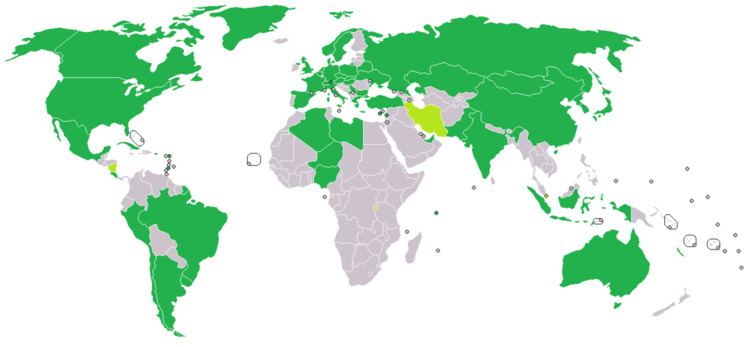Signed 12 November 1974 Condition 5 ratifications Parties 63 | Effective 15 September 1976 Signatories 25 | |
 | ||
Location New York City, New York, United States | ||
The Convention on Registration of Objects Launched into Outer Space (commonly known as the Registration Convention) was adopted by the United Nations General Assembly in 1974 and went into force in 1976. As of November 2016, it has been ratified by 63 states.
Contents
The convention requires states to furnish to the United Nations with details about the orbit of each space object. A registry of launchings was already being maintained by the United Nations as a result of a General Assembly Resolution in 1962.
The Registration Convention and four other space law treaties are administered by the United Nations Committee on the Peaceful Uses of Outer Space.
The European Space Agency and European Organization for the Exploitation of Meteorological Satellites have submitted declarations of acceptance of rights and obligations according to the convention.
Current status
The register is kept by the United Nations Office for Outer Space Affairs (UNOOSA) and includes
Information on registered objects is available at the UNOOSA site
List of states parties
There are currently 63 states parties to the Convention.
Signatories that are not parties
There are four states which have signed, but not ratified, the Convention.
Proposals
A General Assembly resolution from December 2007 that was accepted by consensus recommended that the data should be extended to include:
Background
As of 2008, more than 200 dead satellites littered the part of space near geostationary orbit. Within 10 years, that number could increase fivefold, warns a report by the UN. The resulting chaos could lead to serious damage or loss of a spacecraft.
